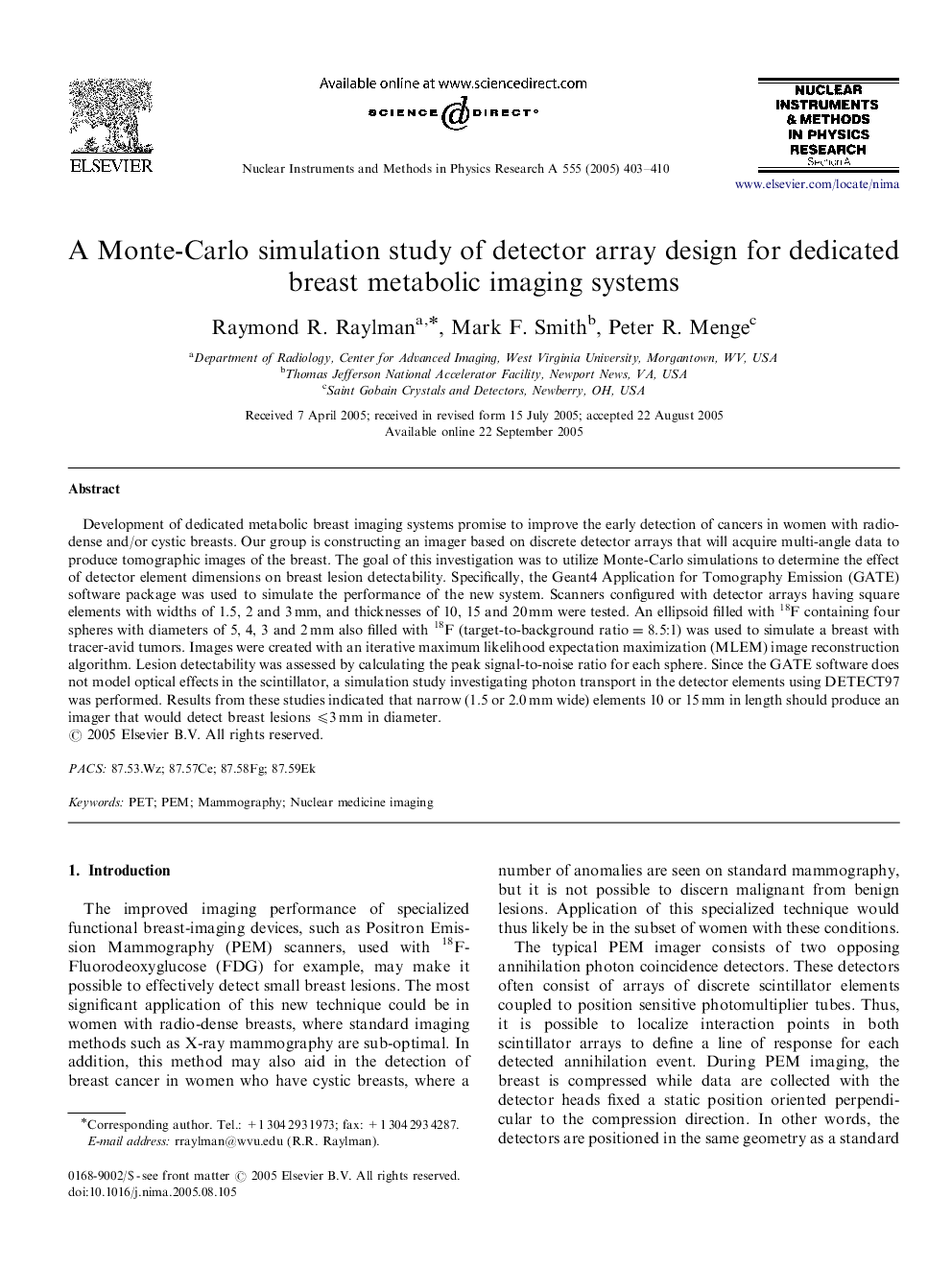| Article ID | Journal | Published Year | Pages | File Type |
|---|---|---|---|---|
| 9844886 | Nuclear Instruments and Methods in Physics Research Section A: Accelerators, Spectrometers, Detectors and Associated Equipment | 2005 | 8 Pages |
Abstract
Development of dedicated metabolic breast imaging systems promise to improve the early detection of cancers in women with radio-dense and/or cystic breasts. Our group is constructing an imager based on discrete detector arrays that will acquire multi-angle data to produce tomographic images of the breast. The goal of this investigation was to utilize Monte-Carlo simulations to determine the effect of detector element dimensions on breast lesion detectability. Specifically, the Geant4 Application for Tomography Emission (GATE) software package was used to simulate the performance of the new system. Scanners configured with detector arrays having square elements with widths of 1.5, 2 and 3 mm, and thicknesses of 10, 15 and 20 mm were tested. An ellipsoid filled with 18F containing four spheres with diameters of 5, 4, 3 and 2 mm also filled with 18F (target-to-background ratio=8.5:1) was used to simulate a breast with tracer-avid tumors. Images were created with an iterative maximum likelihood expectation maximization (MLEM) image reconstruction algorithm. Lesion detectability was assessed by calculating the peak signal-to-noise ratio for each sphere. Since the GATE software does not model optical effects in the scintillator, a simulation study investigating photon transport in the detector elements using DETECT97 was performed. Results from these studies indicated that narrow (1.5 or 2.0 mm wide) elements 10 or 15 mm in length should produce an imager that would detect breast lesions ⩽3 mm in diameter.
Related Topics
Physical Sciences and Engineering
Physics and Astronomy
Instrumentation
Authors
Raymond R. Raylman, Mark F. Smith, Peter R. Menge,
